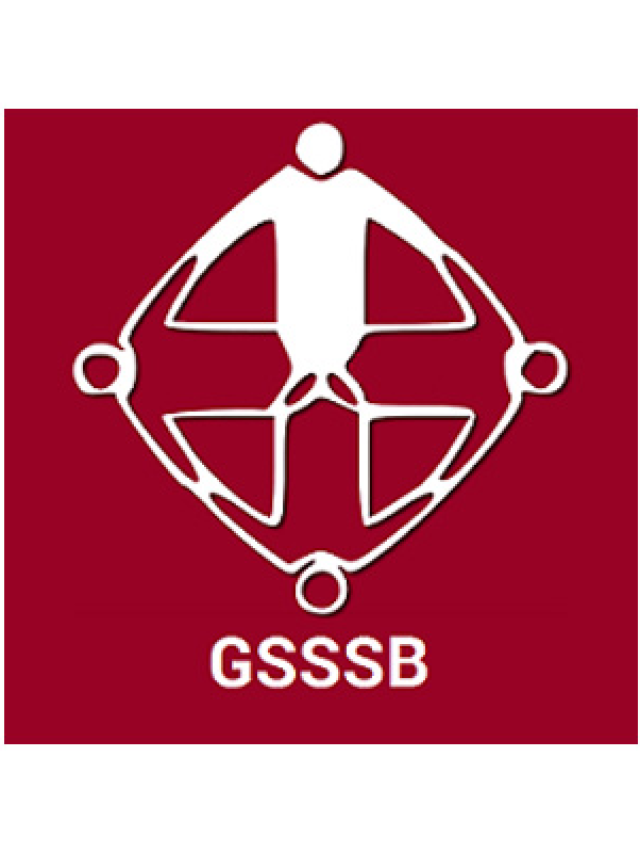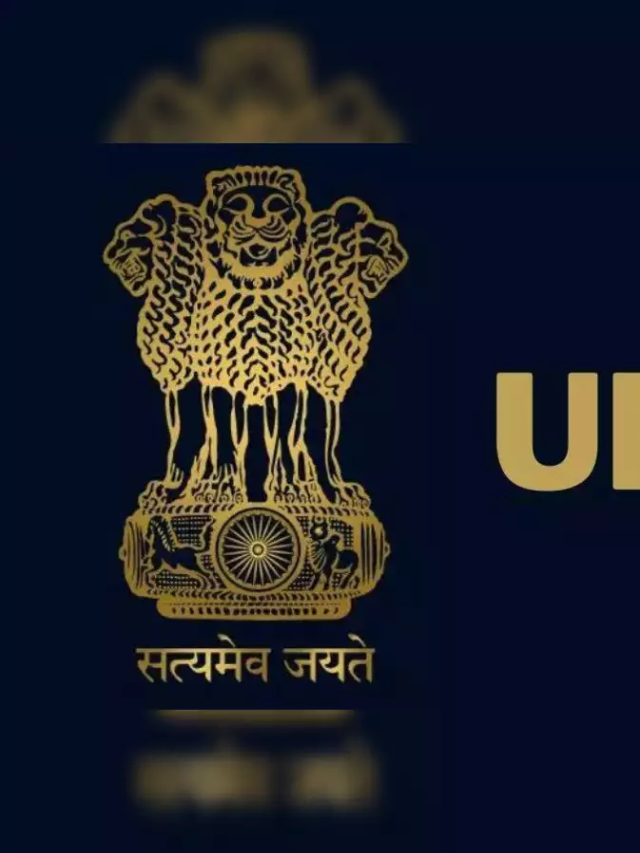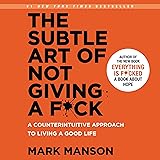| Board | RBSE |
| Class | Class 8 |
| Subject | Science |
| Chapter | Chapter 16 |
| Chapter Name | Air and Water Pollution and its Control |
| Number of Questions Solved | 45 |
| Category | RBSE Solutions |
Air and Water Pollution and its Control Textbook Questions Solved
I. Multiple Choice Questions
Question 1.
- Which of the following is not a green house gas?
(a) Carbon dioxide
(b) Sulphur dioxide
(c) Methane
(d) Nitrogen - Which of the following is a poisonous gas?
(a) Carbon monoxide
(b) Hydrogen
(c) Oxygen
(d) Nitrogen - It is used in the refrigerators:
(a) Hydrogen
(b) Chlorofluoro Carbon
(c) Nitrogen
(d) Oxygen - Holy river of India is:
(a) Ganga
(b) Bedach
(c) Banas
(d) Kosi
Answers:
- (b)
- (a)
- (b)
- (a)
Question 2.
Fill in the blanks:
- The substances that pollute the water are called
- The average temperature of atmosphere is continuously increasing, is called
- is used in aerosol sprays.
- Clean drinking water is called
Answers:
- pollutants
- global warming
- C.F.C
- potable water
Question 3.
Match Column – A with Column – B
| Coloumn-A | Coloumn-B |
| (i) Marble Cancer | (i) Historical heritage |
| (ii) Taj Mahal | (ii) Plantation tree |
| (iii) Save Ganga | (iii) Marble degradation |
| (iv) Van Mahotsav | (iv) Ganga river project |
Answer:
| Coloumn-A | Coloumn-B |
| (i) Marble Cancer | (i) Marble degradation |
| (ii) Taj Mahal | (ii) Historical heritage |
| (iii) Save Ganga | (iii) Ganga river project |
| (iv) Van Mahotsav | (iv) Plantation tree |
Air and Water Pollution and its Control Short Answer Type Questions
Question 1.
Mention the harmful effects of air pollution.
Answer:
Harmful effects of air pollution are:
1. Due to half or incomplete combustion of petrol and diesel, CO a poisonous gas is produced, it decreases the capacity of oxygen carrying in blood.
2. Tetra ethyl lead present in petrol is a dangerous pollutant. It is one of the factors of cancer and tuberculosis.
3. In winters a thick layer of smog is formed due to fog and smoke. It contains NO2 which causes asthma, cough and disorder of respiration.
4. From Petrol Refineries NO2 and SO2 pollutants, we released as gas waste products. Fuel used in power plants also produce SO2. These pollutants are harmful and cause diseases related to lungs.
5. Chloro Floro Carbon (CFC) is a type of air pollutant. It is used in refrigerators and Air conditioners. It harms the Ozone layer of atmosphere. It protects us from ultraviolet rays of the sun. Due to excess dissolution of CFC in air the hole in the ozone layer is increased and created an acute problem.
6. Gases emitted out of Industries like – SO2, Cl2, NH3, N2O cause burning in eyes and throat diseases.
7. Manufacturing industries of Aluminium and Super phosphate produce poisonous gases which cause many diseases.
8. Air pollution also cause harm to plants. SO2 even causes death of plants.
Question 2.
What is global warming?
Answer:
When CO2 is increased in atmosphere then it works as pollutant. CO2 absorbs heat and not allow it to enter in the atmosphere. Now the average temperature is increasing in the atmosphere. It is called global warming.
Question 3.
What is acid rain? How does it effect us?
Answer:
Nitrogen, Sulphur and Carbon dioxide form Sulphuric acid, Nitric acid, Nitrous acid, Sulphurous acid, Carbonic acid, by reacting with water. They convert rain into acid rain and fall on earth. Due to acid rain monuments like Taj Mahal is deteriorating. This event is called marble cancer. It also deteriorates buildings, monuments, bridges, sculptors, railing and railway lines. Ponds become acidic, pH of soil become low. It effects the absorption of minerals by the plants from soil and it become infertile and causes burning in eyes and skin. It damaged membranes of plants and animals.
Measures Taken By Supreme Court To Conserve Historical heritage:
- Orders are given to industries to use CNG and LPG fuels.
- Order to use lead free petrol by vehicles in area Taj mahal.
Question 4.
Write the methods to prevent air pollution.
Answer:
Steps for air pollution Control:
- Gas absorber should have on chimneys of all industries.
- Pollutant particles should be removed through filters.
- Time-to-time combustion engine should be checked.
- Ideal fuels should be used, so less smoke and harmful gases would emit.
- Waste gases and smoke should be oxidised so there would be less pollution.
- Industries should be established away from city.
- Deforestation should be banned.
- More and more plantation should be done.
- Public awareness programmes should be conducted, for environmental cleanliness.
- To drive automobiles leadless petrol, CNG and LPG should be used.
- Crackers should be banned on Diwali to decrease pollution.
- Government should carry out monitoring air’s quality regularly.
- Wind energy, solar energy and hydro power should be used as alternate source of energy.
- Lakh of plants should be planted in the month of July under forest or van mahotsav.
- The use of Vehicles should be less and use of bicycles should be encouraged.
- By putting garbage into compost pit.
Question 5.
What is green house effect? Write its effect.
Answer:
When CO2 is increased in atmosphere then it works as pollutant. CO2 absorbs heat and not allow it to enter in the atmosphere. Now the average temperature is increasing in the atmosphere. It is called Global Warming. Beside CO2, Methane, nitrous oxide and water vapour are also called green house gases. Global warming an acute crisis-It is a cause of melting of world glaciers. It may result into increase in sea level at many places, coastal regions are submerged. Its broad effects could be seen on rain, agriculture, forests, plants and animals. We still have enough time to control this effect otherwise at the end of century temperature could raise upto 2°C which is a dangerous level. Many countries have sign an agreement to decrease the amount of emission of such gases of green house gases.
Question 6.
What are air pollutants?
Answer:
Substances which cause environmental degradation are called pollutants like – (CO) carbon monoxide present in smoke emitted out of automobiles, CO2 (Carbon dioxide) (NO2) Nitrogen oxide etc.
Air and Water Pollution and its Control Long Answer Type Questions
Question 1.
What is water pollution? What are the harms caused by water pollution? Write the methods to prevent water pollution.
Answer:
Water Pollution:
Contamination of water with the substances harmful for life is called water pollution.
Causes of water pollution:
(a) Water becomes polluted when industrial waste, garbage, polythene and other waste mixes with water.
(b) Dirty water of rural drains mixes with pond water and rivers.
(c) Washing clothes, bathing, washing utensils, dumping garbage, giving bath to animals, dispose of solid and liquid waste, cleaning of vehicles in ponds and rivers make water polluted.
(d) Pesticides and chemical fertilizers used increase growth of crops when reaches to rivers along with rain water they become polluted.
(e) Polluted water makes oceanic water polluted. Atomic test domestic oceans, radiations of these explosions make oceanic water polluted.
Effect of water pollution:
Solid waste deposited in water make water polluted. This polluted water contains various, microbes, fungi, parasites etc. Such water can cause infections and diseases like Cholera, diarrhea, skin diseases etc. Polluted water decreases the supply of oxygen to aquatic plants and animals, it puts an adverse effect on their growth. Hence their number is decreasing day-by-day. Polluted water makes soil polluted, it decreases its fertility. Oil refineris, paper industries, textile and sugar industries emit chemicals in which poisonous substances like – lead, arsenic, fluoride are present. These mixes with soil and produce toxicity in animals and plants. Hot water expelled by electric plants and industries, increases the temperature of ponds and put an adverse effect on aquatic life. Pesticides and insecticide dissolved water reach to the underground and makes it polluted.
Measures to control water pollution:
(a) Waste from the industries should not disposed in rivers.
(b) According to the laws passed by the government these wastes should be treated in treatment of plants and then should be drained. These laws should be followed strictly.
(c) Atomic explosions should be banned in oceans.
(d) Washing clothes, bathing of animals, washing utensils in rivers should be banned.
(e) Solid and liquid waste should not be passed near banks of rivers and ponds.
(f) Water supply sources should be checked and cleaned regularly.
(g) Domestic waste should be dumped at right place in options.
(h) At every rural and tehsil level water purifier plants should be installed so pollutants from water should be removed.
Question 2.
Write in detail about the danger over river Ganga.
Answer:
Ganga is one of the holy rivers among famous rivers of India. It is also called Gangamata. Ganga water remains pure (potable) if kept for many days. It nourishes the population of North and east India. According to the study of WWF (World Wild Life Federation) that Ganga is one out of the ten rivers of the world whose existence is in danger. Those cities which are located on the banks of river Ganga dump garbage, treated waste, dead bodies, flowers, pooja material, polythene directly in this river. Hence it is polluting day by day. In 1985 to save this river, Ganga River Plan was started but increasing population and industrialization both have already harmed this river. At present Government has started an integrated plan ‘Namami Ganga’ for its conservation. But to make it successful participation of all Government departments and people is must.
Air and Water Pollution and its Control Additional Questions Solved
I. Multiple Choice Questions
Question 1.
Chlorofluoro carbons are used in:
(a) Air conditioners
(b) Aerosol sprays
(c) Refrigerators
(d) All of these
Question 2.
In which year Ganga Action Plan was launched?
(a) 1980
(b) 1984
(c) 1982
(d) 1985
Question 3.
Bhopal gas tragedy was caused due to
(a) Air pollution
(b) Emission of poisonous gas
(c) Water pollution
(d) Leakage of poisonous gas
Question 4.
Water containing high salt concentration can be purified by
(a) Boiling
(b) UV radiation
(c) Filtration
(d) Reverse osmosis
Question 5.
Which of the following is major source of water pollution?
(a) Industrial Waste
(b) Untreated sewage
(c) Use of fertilizers
(d) Toxic materials
Question 6.
The Taj Mahal is being affected due to
(a) Air pollution?
(b) Water pollution
(c) Radioactive pollution
(d) None of these
Question 7.
Which of the following is not a pollutant?
(a) H2
(b) CO
(c) NO2
(d) SO2
Question 8.
Air pollution is maximum caused by
(a) household detergents and pesticides
(b) automobile exhausts and chemicals from industries
(c) sewage and pesticides
(d) sewage and industrials effluents
Question 9 .
Acid rain is caused due to increase in concentration of:
(a) SO2
(b) CO and CO2
(c) CO and SO2
(d) Ozone and dust
Question 10.
Which of the following type of pollution causes the out break of jaundice?
(a) Air pollution
(b) Water pollution
(c) Soil pollution
(d) Thermal pollution
Question 11.
DDT is:
(a) Non-degradable pollutant
(b) Degradable pollutant
(c) Green house gas
(d) None of these
Question 12 .
Which of the following is the main factor of water pollution?
(a) Pesticides
(b) Industrial waste
(c) Detergent
(d) NH3
Question 13 .
In cities like Bombay and Calcutta, the major air pollutants are:
(a) Ozone
(b) Carbon monoxide and oxides of sulphur
(c) Algae spores
(d) Hot air and hydrocarbons
Question 14.
Which of the following gases are responsible for acid rain?
(a) CO
(b) CO2
(c) SO2
(d) NH3
Question 15.
The disease ‘Minamata’ is caused by poisoning
(a) Lead
(b) Zinc
(c) Mercury
(d) Copper
Answers:
1. (b)
2. (d)
3. (d)
4. (b)
5. (d)
6. (a)
7. (a)
8. (b)
9. (d)
10. (a)
11. (a)
12. (b)
13. (b)
14. (c)
15. (c)
Air and Water Pollution and its Control Very Short Answer Type Questions
Question 1.
Define pollution.
Answer:
The introduction of harmful agents into the environment is called pollution.
Question 2.
Which phenomena causes global warming?
Answer:
Green house effect
Question 3.
Name two green house gases?
Answer:
Carbon dioxide and methane.
Question 4.
Name the two main types of pollution?
Answer:
The two main types of pollution are
- Air Pollution
- Water Pollution
Question 5.
Name two gases which are responsible for acid rain?
Answer:
Sulphur Dioxide and Nitrogen Dioxide.
Question 6.
What is potable water?
Answer:
Water that is fit for drinking is termed as potable water.
Question 7.
Which radiations are absorbed by atmospheric gas?
Answer:
Infrared radiations.
Question 8.
What do you mean by “Van Mahotsav”?
Answer:
When lakhs of trees are planted in July every year, it is termed as Van Mahotsav.
Question 9.
What is smog?
Answer:
A mixture of smoke and fog is called smog.
Question 10.
Which gas is responsible for Bhopal gas tragedy?
Answer:
Methyl isocyanide poisonous Gas.
Question 11.
How water can be purified?
Answer:
Water can be purified by filtration, boiling and chlorination.
Air and Water Pollution and its Control Short Answer Type Questions
Question 1.
What steps does government introduced to stop the air pollution in Delhi?
Answer:
A number of steps were introduced by the government to reduce the pollution. These includes:
- Use of unleaded petrol.
- Adopting Euro-II standards
- Use of CNG in place of diesel and petrol in public transport system. These measures have drastically reduced air pollution and made Delhi a cleaner city in terms of air quality.
Question 2.
Why carbon dioxide is released too much in’the atmosphere?
Answer:
One reason for this is that we are releasing too much CO2 into the atmosphere. This has happened because of the following reasons:
- Combustion of fossil fuels like coal and oil in our power stations and factories; pollutants and green house gases are released.
- Excessive felling of trees (deforestation) for using wood for various purposes and to provide land for farming, industries and urban development; thus, there are fewer trees to absorb CO2 from the atmosphere.
Question 3.
Write two characteristics of chlorofluro carbons (CFCs)
Answer:
- These are used in refrigerators, air conditioners and aerosol sprays.
- CFCs damage the ozone layer of the atmosphere.
Question 4.
Why does the increased level of nutrients in the water affect the survival of aquatic organisms?
Answer:
Chemicals used as fertilizers in agriculture dissolve in water and are washed away into water bodies from the field. The excessive quantities of chemicals like nitrates and phosphates which are present in fertilisers act as nutrients for algae to flourish. Once these algae die, they serve as food for decomposers like bacteria. They use up a lot of oxygen. This results in a decrease in the oxygen level which is harmful for the survival of other organisms.
Question 5.
Burning of fossil fuels causes pollution. Explain.
Answer:
Fossil fuels such as coal, petroleum are burnt to provide a source of energy. Their combustion not only produces energy and carbon dioxide but other poisonous gases like carbon monoxide, sulphur dioxide, oxides of nitrogen and smoke particles. Thus lot of atmospheric pollution is caused by burning of fossil fuels.
Air and Water Pollution and its Control Long Answer Type Questions
Question 1.
Describe the threat to the beauty of the Taj Mahal.
Answer:
Over the past two decades, India’s most famous tourist attraction Taj Mahal located in Agra (U.P), has become a matter of concern. Experts have warned that pollutants in air are discolouring its white marble. So, it is not only living organisms that get affected by polluted air but non-living things like buildings, monuments and status also get affected. The industries located in and around Agra like rubber processing, automobile, chemicals and especially the Mathura oil refinery, have been responsible for producing pollutants like sulphur dioxide and nitrogen dioxide.
These gases react with the water vapour present in the atmosphere to form sulphuric acid and nitric acid. The acid drop down with rain, making the rain acidic. This is called acid rain. Acid rain corrodes the marble of the monument. The phenomenon is also called “Marble Cancer”. Suspended particulate matter, such as the root particles emitted by Mathura oil refinery, has contributed towards the yellowing of the marble. The Supreme court has taken several steps to save the Taj. It has ordered industries to switch to cleaner fuels like CNG (Compressed Natural Gas) and LPG liquified Petroleum Gas). Moreover the automobiles should switch over to unleaded petrol in the the Taj zone.
Question 2.
What is algal bloom? What are its harmful effects?
Answer:
Chemical waste contain nitrates and phosphates which mix with water bodies and ponds. They act as nutrients for algae to flourish and as results in lot of algae growing in them. This incident is algal bloom. Then algae use lot of oxygen in the water body. This results in a decrease in the oxygen level which may kill aquatic organisms.
Question 3.
Why is it necessary to purify the water? Explain the different methods for purifying water.
Answer:
Sources of water, like rivers and lakes, contain many chemicals, pathogens, and other pollutants. Therefore, it is necessary that the water supplied to homes is purified before being made available for human use. The water supply network of the municipal authorities follows the following methods for purification of water.
Water purification at Municipality:
(a) Sedimentation
(b) Filiation
(c) Disinfection
The water supplied to homes can now be used for domestic purposes but may still not be fit for drinking. Water which is safe for human consumption is called potable water. Potable water is free from pollutants, impurities and pathogens. It is clean, clear, transparent, odourless and pleasant in taste with desire quantity of oxygen and salts dissolved. Since there is no simple way to determine purity of water, it is advisable to purify the water further before drinking. Some methods used for domestic and industrial purification of water are:
(a) Boiling
(b) Carbon filtering
(c) Distillation
(d) Reverse osmosis








